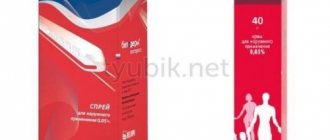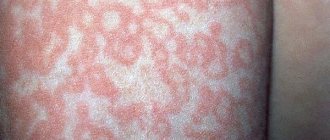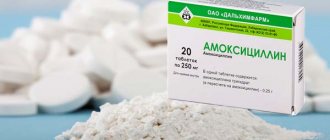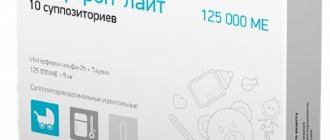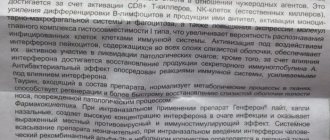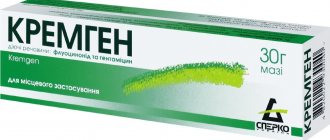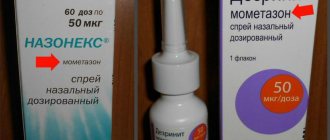pharmachologic effect
Pharmacodynamics
Betamethasone dipropionate is a synthetic glucocorticosteroid (GCS) that has anti-inflammatory, antiallergic, antiexudative, antipruritic and vasoconstrictor effects. When applied to the surface of the skin, it constricts blood vessels, relieves itching, reduces the release of inflammatory mediators (from eosinophils and mast cells), interleukins 1 and 2, interferon gamma (from lymphocytes and macrophages), inhibits activity and reduces the permeability of the vascular wall. Interacts with specific receptors in the cytoplasm of the cell, stimulates the synthesis of matrix ribonucleic acid, inducing the formation of proteins, including lipocortin, mediating cellular effects. Lipocortin inhibits phospholipase A2, blocks the release of arachidonic acid and the biosynthesis of endoperoxides, prostaglandins, leukotrienes (promoting the development of inflammation, allergies and other pathological processes).
Pharmacokinetics
When Beloderm Express is used externally in therapeutic doses, the transdermal absorption of the active substance into the blood is very insignificant. The use of occlusive dressings, inflammation and skin diseases increase the transdermal absorption of betamethasone, which may lead to an increased risk of systemic side effects. Metabolized mainly in the liver. Excreted by the kidneys and bile.
Indications
Skin diseases amenable to glucocorticosteroid therapy:
eczema (various forms) atopic dermatitis / neurodermatitis erythroderma psoriasis bullous dermatoses exudative erythema multiforme photodermatoses (including sunburn) allergic contact dermatitis contact dermatitis (including occupational) non-allergic dermatitis (including solar, radiation) skin reactions to insect bites itching of various etiologies discoid lupus erythematosus lichen planus
Vacation conditions
Available without a prescription.
Marketing Authorization Holder and Manufacturer
BELUPO, medicines and cosmetics d.d., Republic of Croatia, 48000, Koprivnica, st. Danitsa, 5.
Organization that accepts consumer complaints on the territory of the Russian Federation: Representative office of the company BELUPO, medicines and cosmetics d.d., Republic of Croatia in Russia.
Moscow, 119330, Lomonosovsky prosp., 38, apt. 71-72. Phone: +7(495)933-72-13, fax
special instructions
Beloderm Express in spray form is preferable for use in acute forms of dermatosis, including those accompanied by exudation (formation of weeping surfaces).
Long-term external use of Beloderm Express on the skin of the face is not recommended, as the development of rosacea, perioral dermatitis and acne is possible. The course of treatment should not exceed 5 days.
Beloderm Express should not be used in the eye area due to the likelihood of the drug getting into the mucous membrane, which can contribute to the development of cataracts, glaucoma, fungal eye infections and exacerbation of herpetic infections.
Some areas of the body, such as the armpits, groin folds, where there is a kind of natural occlusion, are more at risk of developing stretch marks, so continuous use of the drug on these areas of the skin should be short-term (no more than 4 weeks).
In cases of fungal or bacterial infection on the skin, additional use of an antibacterial or antifungal agent is necessary.
For children, the drug is prescribed only according to strict indications and under medical supervision, since the development of systemic side effects associated with betamethasone is possible.
When using the drug in children, it is necessary to limit the total duration of treatment and exclude measures that lead to increased resorption and absorption (warming, fixing and occlusive dressings, diapers).
When using the drug on large surfaces and/or under an occlusive dressing, suppression of the function of the hypothalamic-pituitary-adrenal system and the development of symptoms of hypercortisolism may occur; a decrease in the excretion of growth hormone and an increase in intracranial pressure may be observed.
Impact on the ability to drive vehicles and machinery
The drug does not affect the ability to drive vehicles and machinery.
Use during pregnancy and lactation
Before using the drug, if you are pregnant, or think you might be pregnant, or are planning a pregnancy, you should consult your doctor.
Use of the drug Beloderm® express
, a spray for external use in pregnant women is allowed in cases where the expected benefit to the mother outweighs the risk to the fetus. In such cases, the use of the drug should be carried out under the supervision of a physician, should be short-term and, if possible, limited to small areas of the skin.
If it is necessary to use the drug during lactation, breastfeeding should be stopped.
Directions for use and doses
For external use only. Beloderm Express, spray for external use, is sprayed onto the affected area of the skin in the amount necessary to cover the affected surface, 2 times a day. The duration of treatment depends on the effectiveness and tolerability of therapy and is usually no more than 4 weeks. Therapy may be repeated within a year. In children and patients with facial skin lesions, the course of treatment should not exceed 5 days. If clinical improvement does not occur, it is necessary to clarify the diagnosis. To uniformly cover a skin area of 100 cm2, it is necessary to apply 2 ml of spray, which corresponds to 1 mg of betamethasone (that is, 13 smooth and full presses on the dispenser; the dose of the drug with one press on the dispenser is 0.15 ml and contains 0.075 mg of betamethasone).
Beloderm Express
Beloderm Express (INN betamethasone) is a long-acting glucocorticosteroid for topical use. Suppresses the functions of white blood cells and tissue monocytes. Prevents the migration of white blood cells into the inflammatory focus. Reduces the ability of monocytes to absorb large macromolecular complexes or corpuscles, bacteria, as well as the inflammatory and immune mediator interleukin-1. Prevents the destabilization of lysosome membranes, thereby preventing proteolytic enzymes from accumulating in the inflammatory focus. Makes capillary walls less permeable. Reduces the activity of connective tissue cells in the body that synthesize the extracellular matrix. Suppresses the activity of phospholipase, which hydrolyzes the phospholipid acyl chain in the sn-2 position, resulting in a decrease in the concentration of proinflammatory and nociceptive mediators prostaglandins and mediators of allergy and inflammation leukotrienes. Prevents an increase in the concentration of COX. Reduces the number of lymphoid cells, phagocytes, acidophilic and basophilic granulocytes due to their movement from the blood to the lymph. Interferes with the synthesis of antibodies. When applied to the skin in the area of blood vessels, it exhibits a vasoconstrictor effect. It affects the metabolism of proteins, fats and carbohydrates: it activates the metabolic reactions of glucose formation from non-carbohydrate compounds, stimulates the absorption of amino acids by liver and kidney cells. Promotes the storage of glycogen by the liver, activating glycogen synthetase and the process of glucose formation from protein compounds. Prevents the absorption of glucose by adipocytes - adipose tissue cells. Promotes the accumulation of sodium ions and water in the body, and the elimination of potassium ions from the body. Prevents the absorption of calcium in the gastrointestinal tract, removes calcium ions from bone tissue and enhances their elimination along with urine. Exhibits a catabolic effect in peripheral tissues. When used locally (externally), the ability of the drug to achieve a therapeutic effect is due to its anti-inflammatory, antiallergic, vasoconstrictor (as a result of which exudation is suppressed) effect.
The anti-inflammatory potential of Beloderm Express is thirty times greater than that of hydrocortisone. The drug has no affinity for mineralocorticoid receptors. After application to the skin, about 12-14% of the dose used is absorbed into the systemic bloodstream (to a lesser extent when applied to intact skin, to a greater extent when used in an area of inflammation or applied under an airtight bandage). Beloderm Express is prescribed for skin diseases of various origins caused by both exogenous and endogenous causes, including eczematous skin lesions (coin-shaped, atopic, dyshidrotic eczema), infantile prurigo (prurigo), contact dermatitis, exfoliative dermatitis, pruritic lichenoid dermatitis, photocontact dermatitis , seborrhea, intertrigenous dermatitis, etc. The dose is selected by the doctor on an individual basis. Frequency of use: 2-6 times a day until the clinical picture improves, then 1-2 times a day. When using the drug in pediatric practice, as well as in persons with facial skin lesions, the duration of the medication course should be no more than five days. For viral and bacterial skin infections, as well as mycoses, the use of the drug is possible only under strict medical supervision. The same is true for patients in the post-vaccination period, as well as persons with diseases of the gastrointestinal tract (ulcerative-erosive lesions of the stomach and duodenum, inflammation of the mucous membrane of the esophagus, stomach, small intestine, etc.), and the cardiovascular system. If signs of skin irritation or individual intolerance appear, the use of Beloderm Express should be interrupted and appropriate symptomatic treatment should be carried out. When an infection occurs that has developed against the background of an existing disease, it is necessary to carry out antimicrobial therapy.
Side effects
When used in therapeutic doses, the drug is usually well tolerated, side effects are absent or mild. As with the use of other corticosteroids, hypersensitivity reactions may develop (skin itching, burning, redness, dry skin, acne-like changes (“steroid” acne, perioral dermatitis, allergic contact dermatitis, hypopigmentation)). With long-term use, as well as when using occlusive dressings, skin maceration, secondary infections, skin atrophy, hirsutism, hypertrichosis, telangiectasia, folliculitis, prickly heat, purpura. When applied to large surfaces of the body, systemic side effects of glucocorticosteroids may occur (hyperglycemia, glucosuria, reversible inhibition of adrenal function, manifestation of Itsenko-Cushing syndrome). If a hypersensitivity reaction or side effects occur, therapy should be discontinued and consult a doctor.
Beloderm express spray for external use 0.05% 20ml No. 1
From the endocrine system:
decreased glucose tolerance, steroid diabetes mellitus or manifestation of latent diabetes mellitus, suppression of adrenal function, Itsenko-Cushing syndrome (including moon face, pituitary type obesity, hirsutism, increased blood pressure, dysmenorrhea, amenorrhea, myasthenia gravis, stretch marks), delay sexual development in children.
From the side of metabolism:
increased excretion of calcium ions, hypocalcemia, weight gain, negative nitrogen balance (increased protein breakdown), increased sweating, fluid and sodium ion retention (peripheral edema), hypernatremia, hypokalemic syndrome (including hypokalemia, arrhythmia, myalgia or spasm muscles, unusual weakness and fatigue).
From the side of the central nervous system:
delirium, disorientation, euphoria, hallucinations, manic-depressive psychosis, depression, paranoia, increased intracranial pressure, nervousness or anxiety, insomnia, dizziness, vertigo, pseudotumor of the cerebellum, headache, convulsions.
From the cardiovascular system:
arrhythmias, bradycardia (up to cardiac arrest); development (in predisposed patients) or increased severity of chronic heart failure, ECG changes characteristic of hypokalemia, increased blood pressure, hypercoagulation, thrombosis. In patients with acute and subacute myocardial infarction - the spread of necrosis, slowing down the formation of scar tissue, which can lead to rupture of the heart muscle; with intracranial administration - nosebleeds.
From the digestive system:
nausea, vomiting, pancreatitis, steroid ulcer of the stomach and duodenum, erosive esophagitis, bleeding and perforation of the gastrointestinal tract, increased or decreased appetite, flatulence, hiccups. In rare cases, increased activity of liver transaminases and alkaline phosphatase.
From the senses:
sudden loss of vision (with parenteral administration in the head, neck, nasal turbinates, scalp, deposition of drug crystals in the vessels of the eye is possible), posterior subcapsular cataract, increased intraocular pressure with possible damage to the optic nerve, a tendency to develop secondary bacterial, fungal or viral infections eye, trophic changes in the cornea, exophthalmos.
From the musculoskeletal system:
slower growth and ossification processes in children (premature closure of epiphyseal growth zones), osteoporosis (very rarely - pathological bone fractures, aseptic necrosis of the head of the humerus and femur), rupture of muscle tendons, steroid myopathy, decreased muscle mass (atrophy); with intra-articular administration - increased pain in the joint.
Dermatological reactions
: delayed wound healing, petechiae, ecchymoses, skin thinning, hyper- or hypopigmentation, steroid acne, stretch marks, tendency to develop pyoderma and candidiasis.
Allergic reactions
: generalized (skin rash, skin itching, anaphylactic shock), local allergic reactions.
Local reactions:
with parenteral administration - burning, numbness, pain, paresthesia and infection at the injection site, rarely - necrosis of surrounding tissues, scar formation at the injection site; with intramuscular injection (especially into the deltoid muscle) - atrophy of the skin and subcutaneous tissue.
Other:
development or exacerbation of infections (the appearance of this side effect is facilitated by jointly used immunosuppressants and vaccination), leukocyturia, withdrawal syndrome.
With intravenous administration - blood flow to the face, convulsions.
For external use:
rarely - itching, hyperemia, burning, dryness, folliculitis, acne, hypopigmentation, perioral dermatitis, allergic dermatitis, skin maceration, secondary infection, skin atrophy, stretch marks, prickly heat. With long-term use or application to large areas of skin, systemic side effects characteristic of GCS may develop.
Overdose
Acute overdose is unlikely, however, with excessive or prolonged use of the drug, especially in children, on large surfaces of the skin, application to skin with impaired integrity or when used under an occlusive dressing, chronic overdose is possible, accompanied by signs of hypercorticism (hyperglycemia, glycosuria, reversible depression of function adrenal cortex, manifestation of Itsenko-Cushing syndrome).
Treatment: gradual withdrawal of the drug and symptomatic treatment are recommended.
